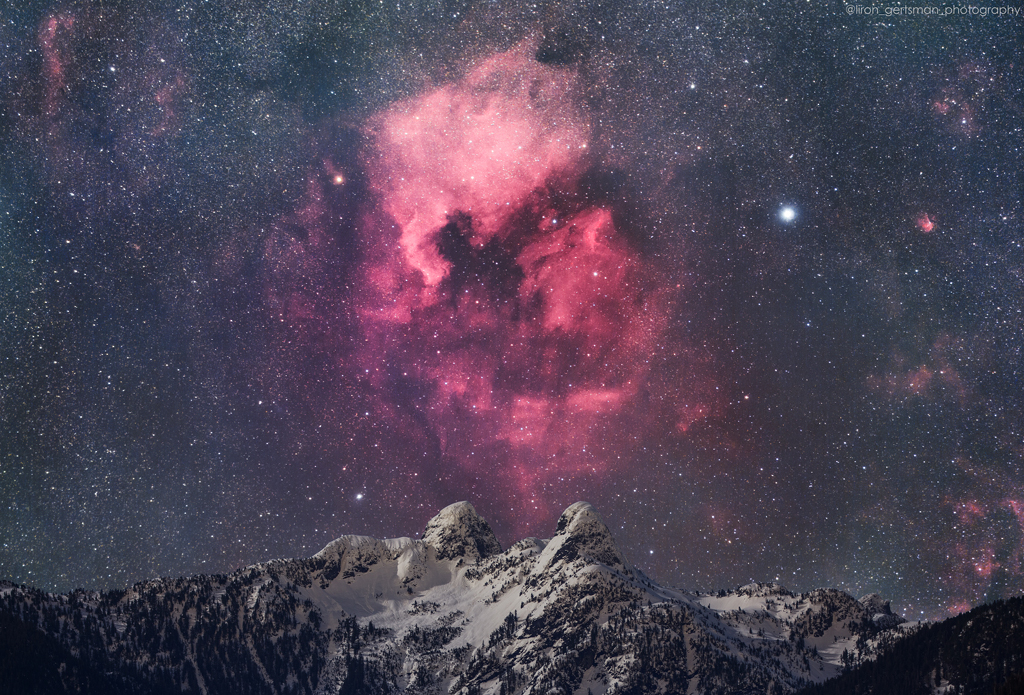2021年01月29日
North American Nightscape
Composite Image Credit & Copyright: Liron Gertsman
Explanation: On January 21, light from the Moon near first quarter illuminated the foreground in this snowy mountain and night scene. Known as The Lions, the striking pair of mountain peaks are north of Vancouver, British Colombia, Canada, North America, planet Earth. Poised above the twin summits, left of Deneb alpha star of the constellation Cygnus, are emission regions NGC 7000 and IC 5070. Part of a large star forming complex about 1,500 light-years from Vancouver, they shine with the characteristic red glow of atomic hydrogen gas. Outlines of the bright emission regions suggest their popular names, The North America Nebula and The Pelican Nebula. The well-planned, deep nightscape is a composite of consecutive exposures made with a modified digital camera and telephoto lens. Foreground exposures were made with camera fixed to a tripod, background exposures were made tracking the sky. The result preserves sharp natural detail and reveals a range of brightness and color that your eye can’t quite see on its own.
Tomorrow’s picture: southern sky from 38,000 feet
北美洲的夜空
组合影像提供与版权: Liron Gertsman
说明: 在1月21日,上弦月的月华照亮了这些雪峰及夜空。影像中,这二座名为狮子的山峰,位在地球北美洲加拿大英属哥伦比亚省温哥华市以北。在这对狮子峰的上空,天鹅座最明亮的天津四左侧,为发射星云NGC 7000与IC 5070。散发特征原子氢泛红辉光的这对星云,距离温哥华约1,500光年远,是一个大型的恒星形成区复合体的一部分。这二个明亮发射星云的轮廓,分别为它们博得北美洲星云及鹈鹕星云的称号。这幅经过仔细规划的深空影像,是由改装过的数位相机和长焦镜头拍摄的数张照片并接而成。记录前景的照片,取像的设备是固定在三脚架的相机,而拍摄背景照片时,则起动导星配备。所组合出的影像,除了具有清晰的自然景观之外,更呈现肉眼无法侦测的大范围亮度变化及色泽。







